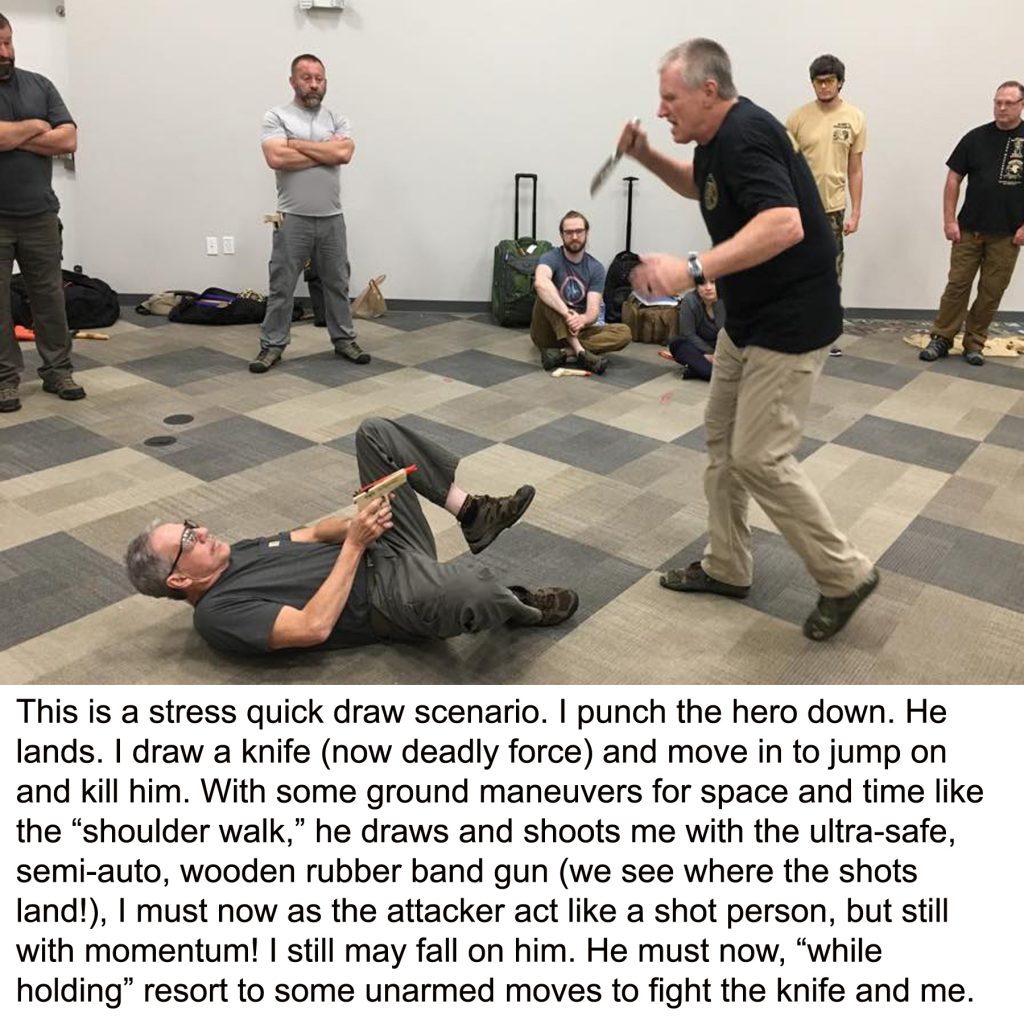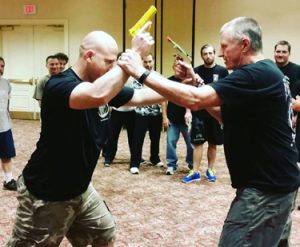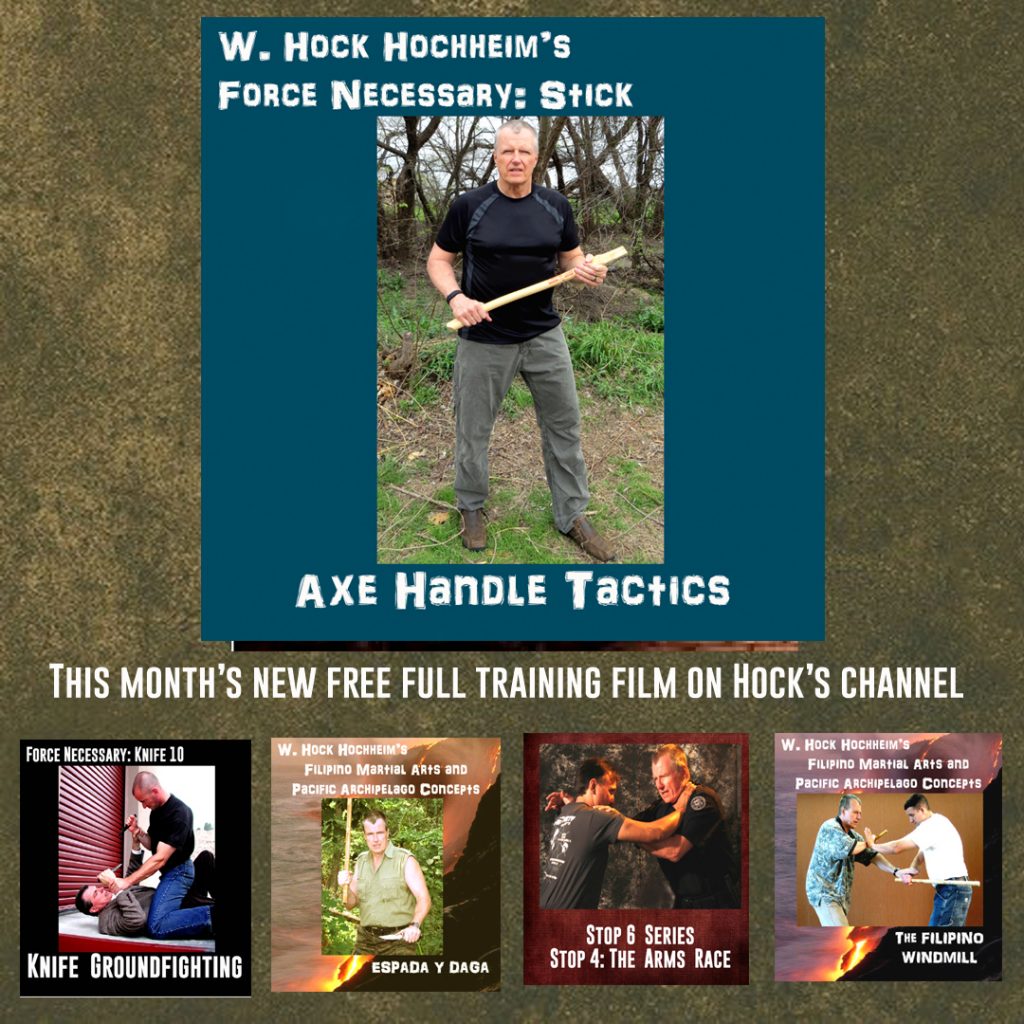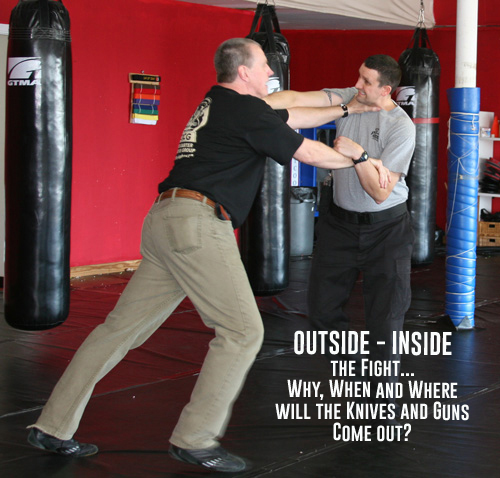 Not a lot of people practice drawing their weapons under realistic stress, if indeed some people ever practice drawing their weapons at all. In typical training the stick, the knife, or the gun are already in one’s hands when they start a training set! If a stick, knife or gun weapon-pull is involved in training, it is usually done in a classic western motif, that is like a showdown, like an old west stand-off gunfight, standing 5, 6 or more feet from an enemy. It suggests the enemy is far enough away that the practitioner has somehow been visually tipped-off that the enemy is about to draw their own weapon. Thusly, justification of a practitioner’s self defense draw.
Not a lot of people practice drawing their weapons under realistic stress, if indeed some people ever practice drawing their weapons at all. In typical training the stick, the knife, or the gun are already in one’s hands when they start a training set! If a stick, knife or gun weapon-pull is involved in training, it is usually done in a classic western motif, that is like a showdown, like an old west stand-off gunfight, standing 5, 6 or more feet from an enemy. It suggests the enemy is far enough away that the practitioner has somehow been visually tipped-off that the enemy is about to draw their own weapon. Thusly, justification of a practitioner’s self defense draw.
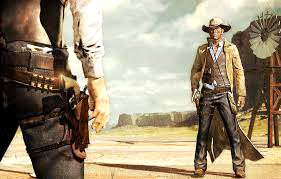
Thee cowboy, main street, showdown of the old west, is discounted today as largely a myth by historians and the public, especially in gunfights. Yet most gun people still mostly shoot at ranges today under exactly this basic, myth-format, minus the reality tips-offs! Think about it. This “western-format” of training is innocently-ignorantly forced upon gun people, because of:
- one-way, live-fire range, safety. It is obvious that one cannot get into the “nitty-gritty” of CQC combat with live-fire weapons, waaaay too dangerous, and-
- the overall, total obsession with precision, bullseye shooting – which is certainly important enough, yet it creates the mind trap of doing only that and too much of it, in lieu of other very important, interactive firearms training. (And it’s so much fun!)
And I might add, with guns, you draw on a whistle or a beep. Abstract, not the vital, visual clues of a human opponent drawing a weapon on you. But way worse these days, due to range safety and insurance regulations, most never even get to draw a pistol from their holsters at all! (More on this later.)
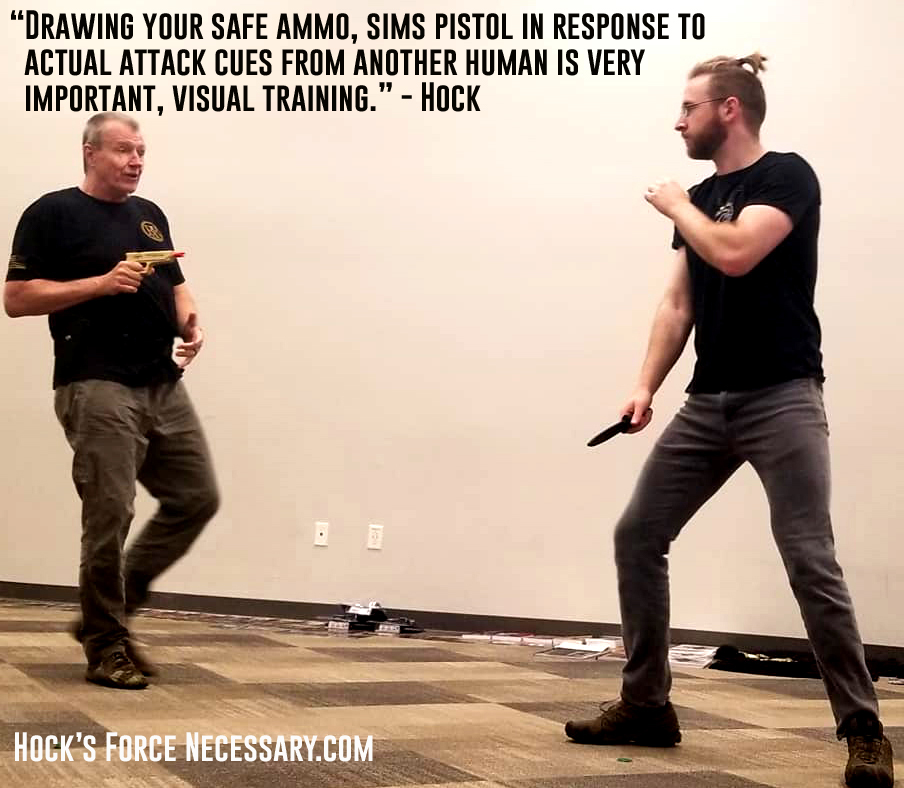
These “some-distance-apart” – “outside” draws do happen, sure, but weapons of all sorts are frequently drawn very close up, “inside,” in full contact with bodies vertical and horizontal, after a fight has started! From inside a hands-on fight, while standing all the way down to a ground fight. Situationally, one might say then, outside-the-fight, or inside-the-fight, and that there are two weapon, distance draw times,”
- Distance Draw One – “before first-contact.” Outside the fight and,
- No Distance Draw Two, the second draw – “after first contact. Inside the fight,” and the after-contact gun draw is awfully ignored in training. In the empty-hand, stick and knife world this reality is better realized, I think because unarmed, stick and knife people come better prepared for messy, athletic combatives experiments, while in the gun world, more people shy away from or ignore the ugly, messy, (and very athletic) unarmed combatives aspect of close quarter fighting.
So, that messy, “second draw”, the one after the fight as started, after a few punches are thrown, after your face has been raked, after your nose if broken, after your back has slammed against the cement, after your nuts or shin has been kicked…exactly when do they or us – do we or don’t we, do they or don’t they, draw out knives, guns, clubs, brass knucks, etc. and why? So, we shall enter into the study of “who, what, where, when, how, and why” do people draw their weapons inside the physical fight, and after the first collision?
The Pathways of the Hands to Weapons. First off, some primers. We have already documented the three major weapon-carry sites in prior essays, outlines, and books but here they are again quickly:
1: Primary Carry Sites – think quick draw
2: Secondary Carry Sites – think backup
3: Tertiary Carry Sites – think lunge and reach, off the body.
These are locations on or near the body are we need to anticipate weapon pulls and grabs when dealing with suspicious people, and-or suspicious situations. Their hands access these weapon sites. (This is where we pack our stuff too!) “Watch the hands, it’s the hands that will kill you,” is the old police adage. Memorize the pathways of the hands! Of course, this doesn’t mean that you just stare at their hands during an encounter, but you must keep track of their hands. Tip-offs to weapon draws are in other essays and not the main topic in this one.
Now, let’s try and keep you of jail, shall we? And quickly, this review too. If there’s going to be trouble, or there is trouble, the police will always dissect the, “why were you there?” question. But we look beyond that here too. Here are a few other considerations in the progression of justification:
- Leave – Don’t Leave. (Why are you there? Why are you still there?)
- Draw – Don’t Draw (as in Pull – Don’t Pull?)
- Aim – Don’t Aim (as in Point – Don’t Point?)
- Strike Out – Don’t Strike Out (as in a: Use – Don’t Use, b: Hit – Don’ t Hit, c: Stab – Don’t Stab, d: Shoot – Don’t Shoot?)
In other words, is aiming a stick tip, knife tip or gun barrel at someone legally worse than just pulling it out and just holding it down at your side? Could be. Legal dissections. Situational. Brandishing. But that sort of presentation stuff is usually in a stand-off, showdown, “Draw One,” distance-apart situation.
But if someone is armed, weapons pocketed or holstered, and gets into a grappling/fist-fight, why and at what point does the unarmed fight turn into a weapon draw and fight? Or! Or, not a weapons fight, after the fight has started, and instead remains an unarmed fight between two armed people?
As an Army and Texas patrolman and long-time detective within, I have investigated tons of assaults, aggravated assaults, attempted murders and murders, plus have received continuous police training on violent crime. Here is what I think about that…
- 1: No pull – they actually forget they are armed.
- 2: No pull – they know better, the use is not legal.
- 3: Pull – when they get mad enough.
- 4: Pull – when they start to lose.
- 5: Pull – when they desire dominant fervor.
1: No pull – they forget. Yes, people get in fights and can forget they are carrying a weapon. When we arrest them and discover a gun or knife on them and ask them, “Why didn’t you use this?” They sometimes answered, “I forgot I had it.” This is a common occurrence.
2: No pull – they know better. Some people understand that the situation they are in doesn’t warrant or justify the use of their sticks, knives or guns. The situation doesn’t “rise to that occasion.” Some seasoned criminals know this. Smart guys and, of course, cops. Cops are carrying all kinds of weapons, get in all kinds of scrapes, and never pull the weapons from this sense of understanding and control.
3: Pull – they get mad enough. Everyone understands this. You are in a fight and perhaps take an extra serious blow or experience, something that just further enrages you. You forget the law, jail, and your common sense and you pull that knife or gun out.
4: Pull – they start to lose. Everyone understands this, too. You are in a fight and sense it is ending very badly for you. Predicting the disaster, you pull out the weapon.
5: Pull – dominant fervor. An official name for this category had arisen years ago, which recognizes a certain personality type. When they are in the final stage of winning or have won, they hate for it to be over. Victory! They want to further punish the opponent. So rather than leave, they want to enjoy themselves and the victory. Enjoy the moment. If they have the enemies pinned against the wall or ground or in their clutches, out comes the guns or knives. The weapons get shoved in the loser’s face with celebratory words. They may carve people up a bit. I recall a case I worked once where the winner cut the loser’s face and said, “Here, wear this for awhile.” Consider this as a “victory lap.”
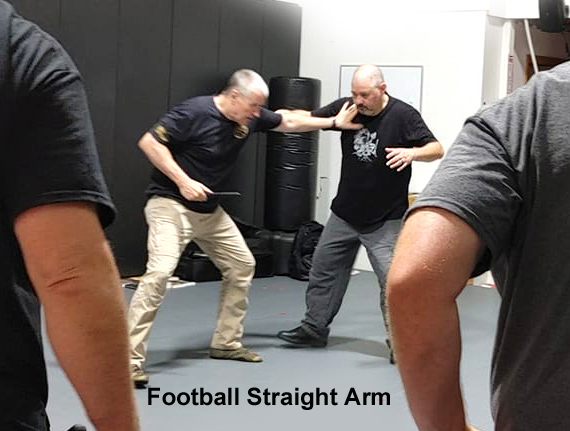 Before we summarize, I have to quickly mention two draw events we also practice within this module that get space after losing space. And they are the “Shove-Off” and draw, and the “Football Straight Arm” and draw, weapon pulls. In the Shove, you’ve engage, then realize your weapon is needed. You shove-off the opponent and you are physically free of him for a second, free for a non-contact draw, and then you draw. In a way, you have disengaged back into a spatial, non-contact draw. Or, you “football-straight-arm the opponent, and at arm’s length away, draw your weapon.
Before we summarize, I have to quickly mention two draw events we also practice within this module that get space after losing space. And they are the “Shove-Off” and draw, and the “Football Straight Arm” and draw, weapon pulls. In the Shove, you’ve engage, then realize your weapon is needed. You shove-off the opponent and you are physically free of him for a second, free for a non-contact draw, and then you draw. In a way, you have disengaged back into a spatial, non-contact draw. Or, you “football-straight-arm the opponent, and at arm’s length away, draw your weapon.
Outside-Inside Summary. In the martial world, “outside-inside” usually means to be positioned or doing something either outside the opponent’s arms or inside the arms. It must also include distance. To experiment with the “no-contact-yet, stress-draw” and “after-the-contact draw” challenge is to always train standing through ground with soft or dull, training weapons and replica guns with simulated ammo, so that you can interact with real-live, moving, thinking training partners, and you can feel and-or see the opponent’s after-contact weapon draws.
With firearms training, dedicate a time-split for an 8 hour day, something like 4 hours live fire, then step away from the range and real guns and do another 4 hours of simulated situations. The smallest of positional, situations should be practiced and experienced. Remember you are not learning how to gunfight, unless you are battling with moving, thinking people who are shooting back at you.
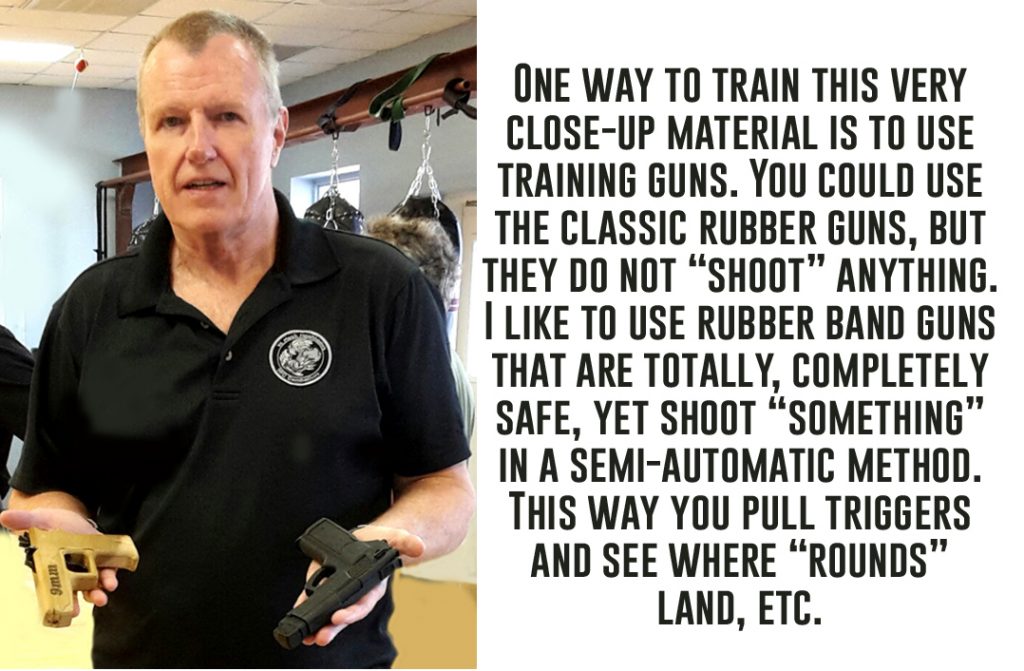 ****
****
Hock’s email is Hock@hockscqc.com
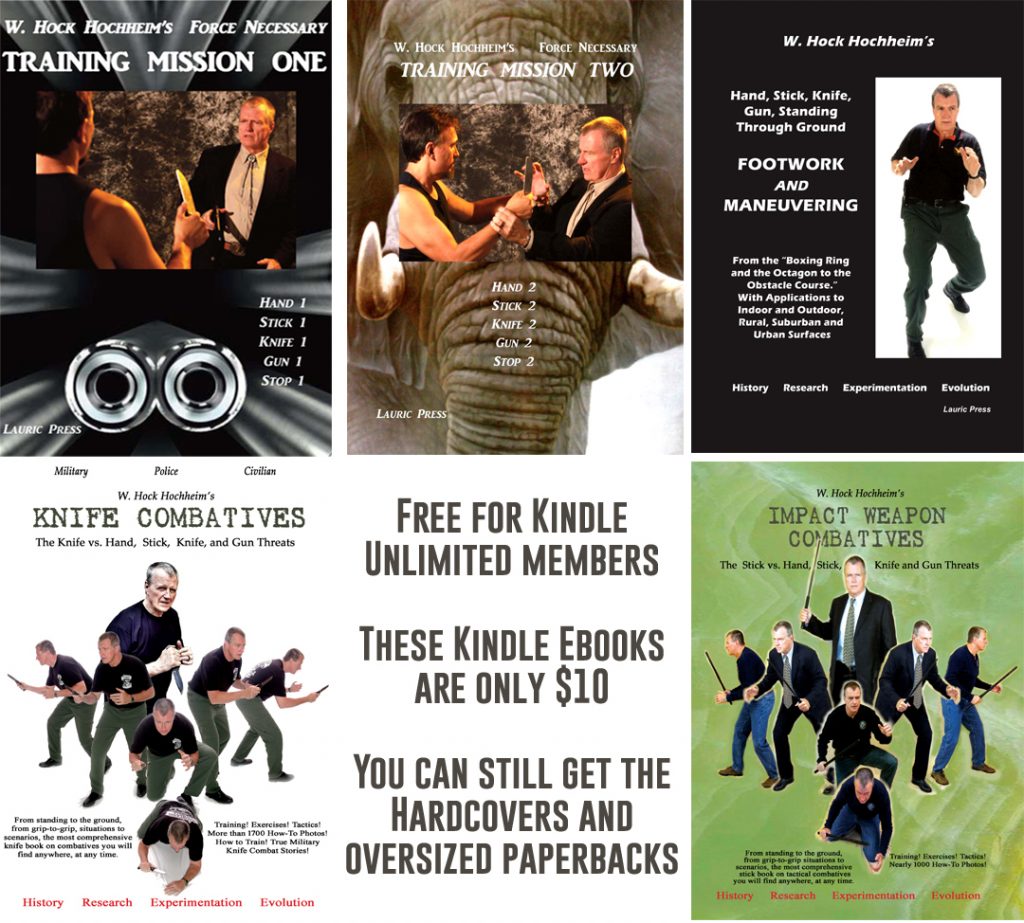

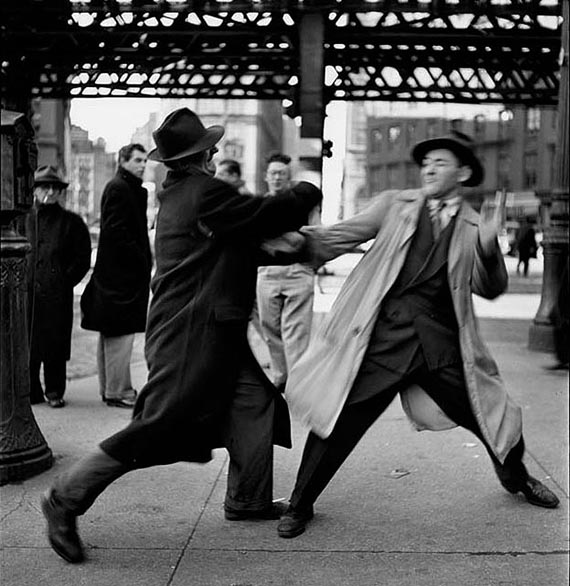
 So, we have to diminish them. I’ve used the sarcastic analogy also for years about how we would hate to fight “Bruce Lee on 3 cups of coffee.” Bruce, fresh. Alert. But throw chair at his head, and he’s Bruce on two cups. A lamp at his head? One cup. And so on until he becomes…”manageable.” Diminished. You get the picture. The idea. When we stand before a giant that we have to fight into handcuffs, it seems to be an impossible task. But if you diminish him enough, not only can you cuff him, you can tie his shoelaces together. Your first serious diminishment may knock the opponent cold. Which would be great, but you certainly can’t count on it. For me, in all these years working I have only knocked out one person with a first punch. I have seen a few of my co-workers do so. It certainly happens, but…in a mixed weapons world, you probably might have to settle for, and make plans for, the initial stun-diminishment. Fortune favors the prepared. But diminishment is NOT just about hand striking.
So, we have to diminish them. I’ve used the sarcastic analogy also for years about how we would hate to fight “Bruce Lee on 3 cups of coffee.” Bruce, fresh. Alert. But throw chair at his head, and he’s Bruce on two cups. A lamp at his head? One cup. And so on until he becomes…”manageable.” Diminished. You get the picture. The idea. When we stand before a giant that we have to fight into handcuffs, it seems to be an impossible task. But if you diminish him enough, not only can you cuff him, you can tie his shoelaces together. Your first serious diminishment may knock the opponent cold. Which would be great, but you certainly can’t count on it. For me, in all these years working I have only knocked out one person with a first punch. I have seen a few of my co-workers do so. It certainly happens, but…in a mixed weapons world, you probably might have to settle for, and make plans for, the initial stun-diminishment. Fortune favors the prepared. But diminishment is NOT just about hand striking.
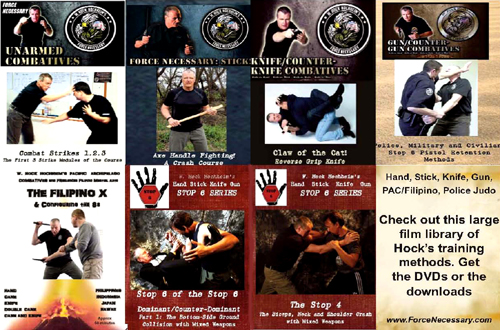

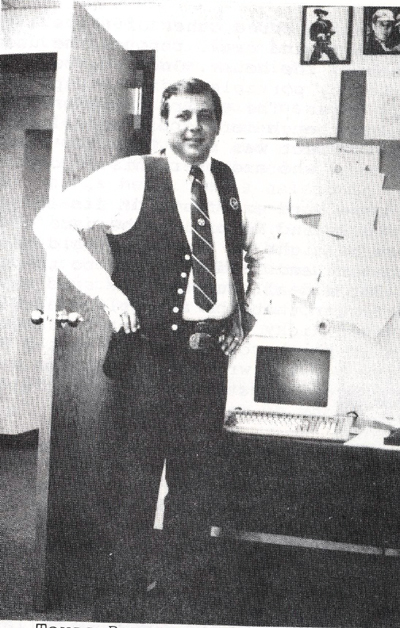
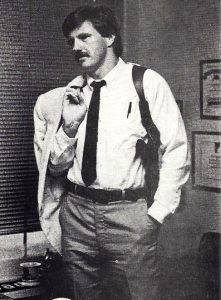

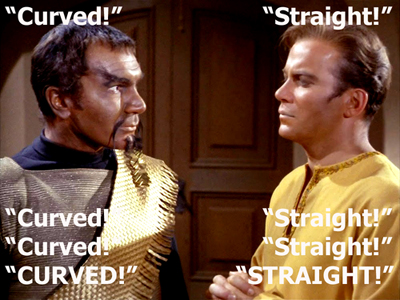
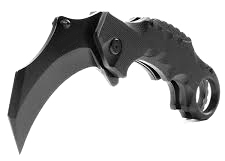
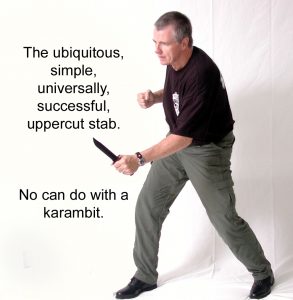
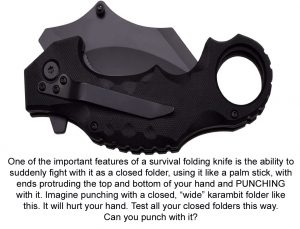 but in the heat of the fight, can’t open right away. The folder then must become a palm stick until it can be opened. Your smart- selected knife when folded, ends should protrude from the top and bottom of the fisted hand, and it should support the hand inside the fist for punching. I have a pretty big hand and have tried punching heavy bags with various karambits. Due to the needed space for the curved blade, the folded karambits are quite wide and have all hurt to punch with. This “wideness” and pain when punching alert is on my “what-knife-to-pick” checklist and another survival reason/problem to avoid the karambit.
but in the heat of the fight, can’t open right away. The folder then must become a palm stick until it can be opened. Your smart- selected knife when folded, ends should protrude from the top and bottom of the fisted hand, and it should support the hand inside the fist for punching. I have a pretty big hand and have tried punching heavy bags with various karambits. Due to the needed space for the curved blade, the folded karambits are quite wide and have all hurt to punch with. This “wideness” and pain when punching alert is on my “what-knife-to-pick” checklist and another survival reason/problem to avoid the karambit.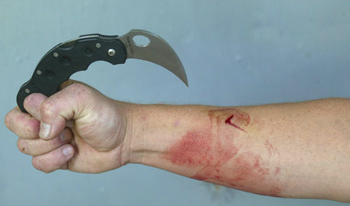
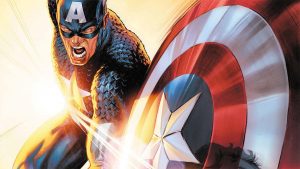
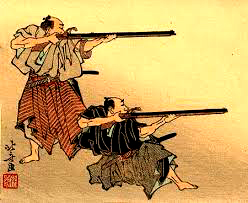
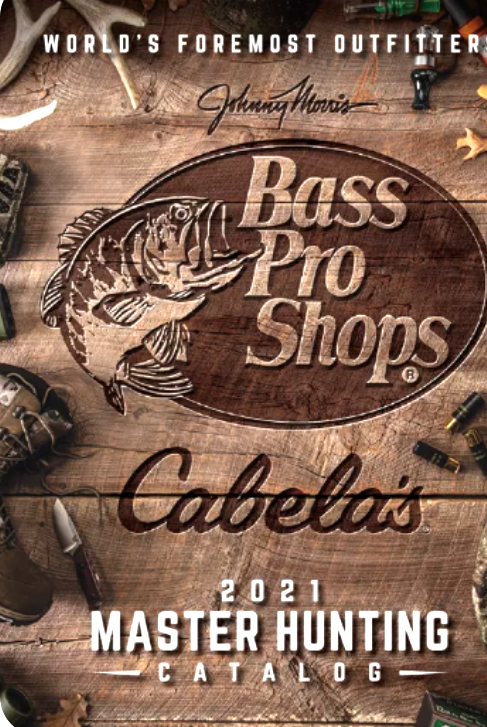 I recently thumbed through the Cabela’s catalog, and for those overseas, Cabela’s is a giant chain store in the USA , one stop-shop for hunting, shooting, fishing gear and outdoor clothes. It’s enormous and could never exist in most countries because of the knives and guns. I did a countdown of their knife section geared for hunters, skinners, gutters, meat prep and fishing knives. Ten pages of knives, about 8 to 10 practical, knives on each page. About 80 to 100 knives for hands-on “users and workmen” and none, not a single one was a karambit.
I recently thumbed through the Cabela’s catalog, and for those overseas, Cabela’s is a giant chain store in the USA , one stop-shop for hunting, shooting, fishing gear and outdoor clothes. It’s enormous and could never exist in most countries because of the knives and guns. I did a countdown of their knife section geared for hunters, skinners, gutters, meat prep and fishing knives. Ten pages of knives, about 8 to 10 practical, knives on each page. About 80 to 100 knives for hands-on “users and workmen” and none, not a single one was a karambit.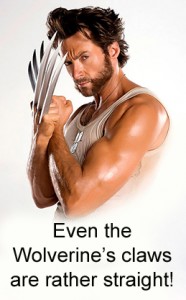
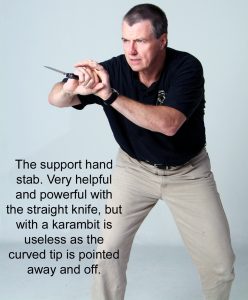
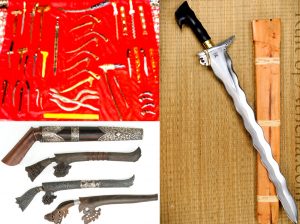
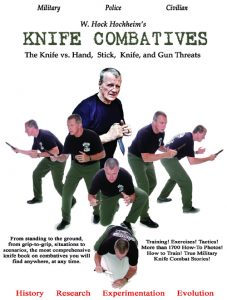
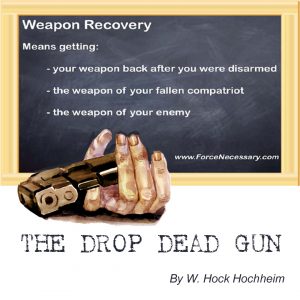
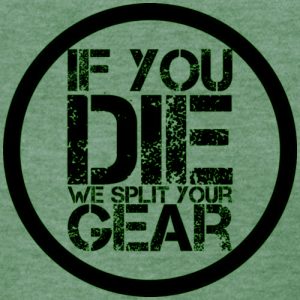
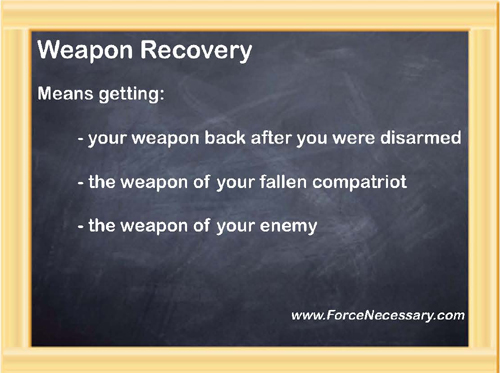
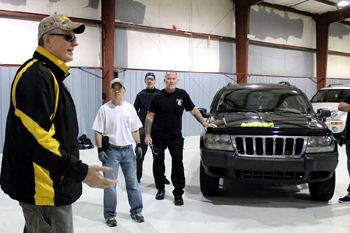
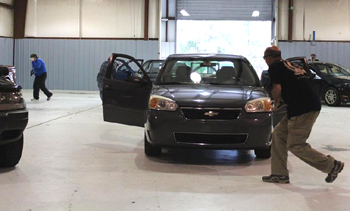
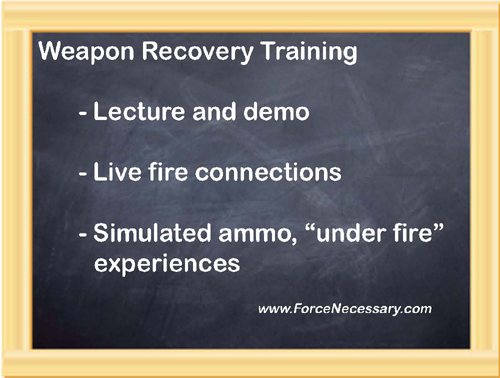
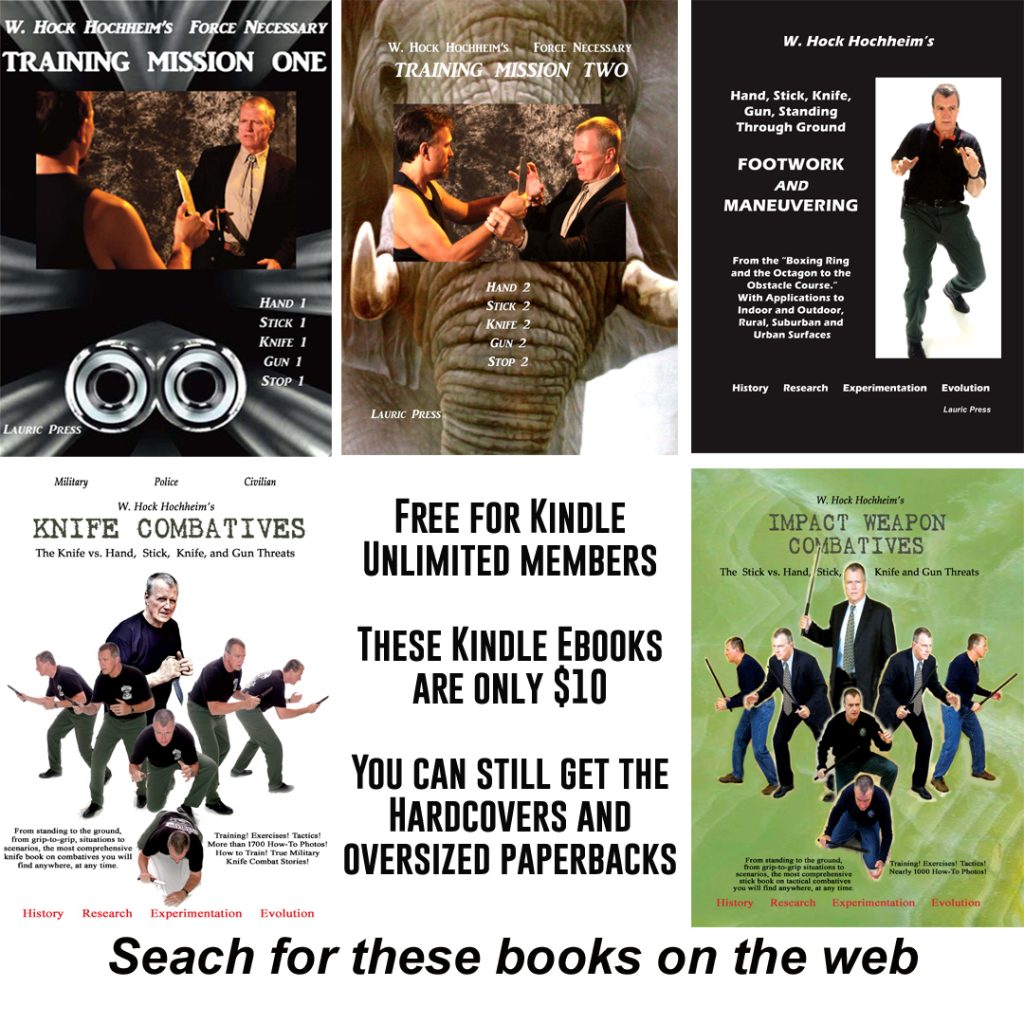
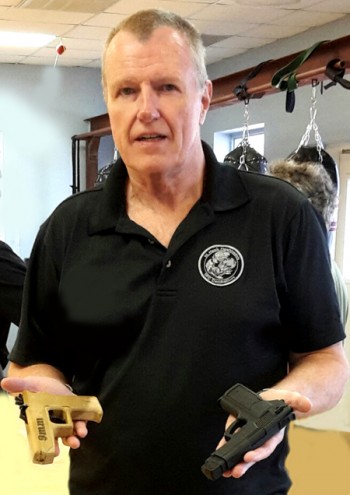
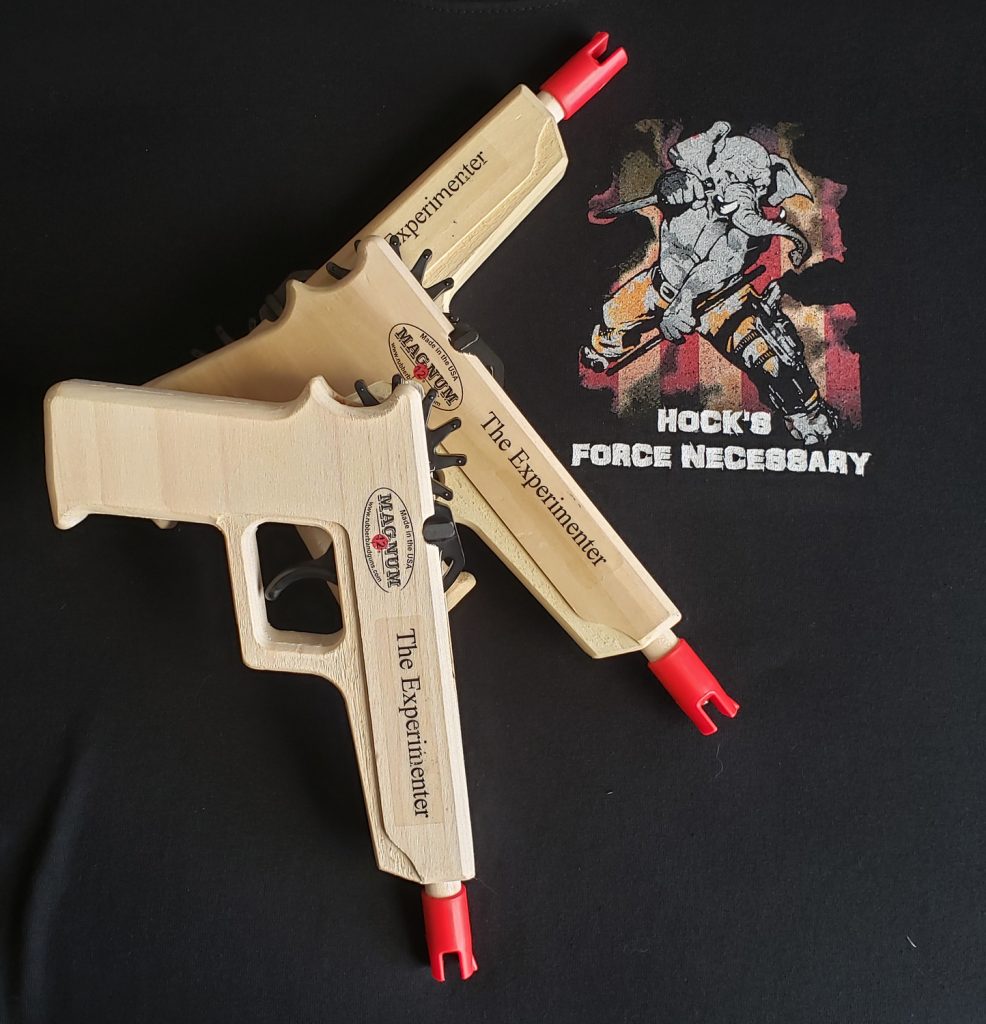
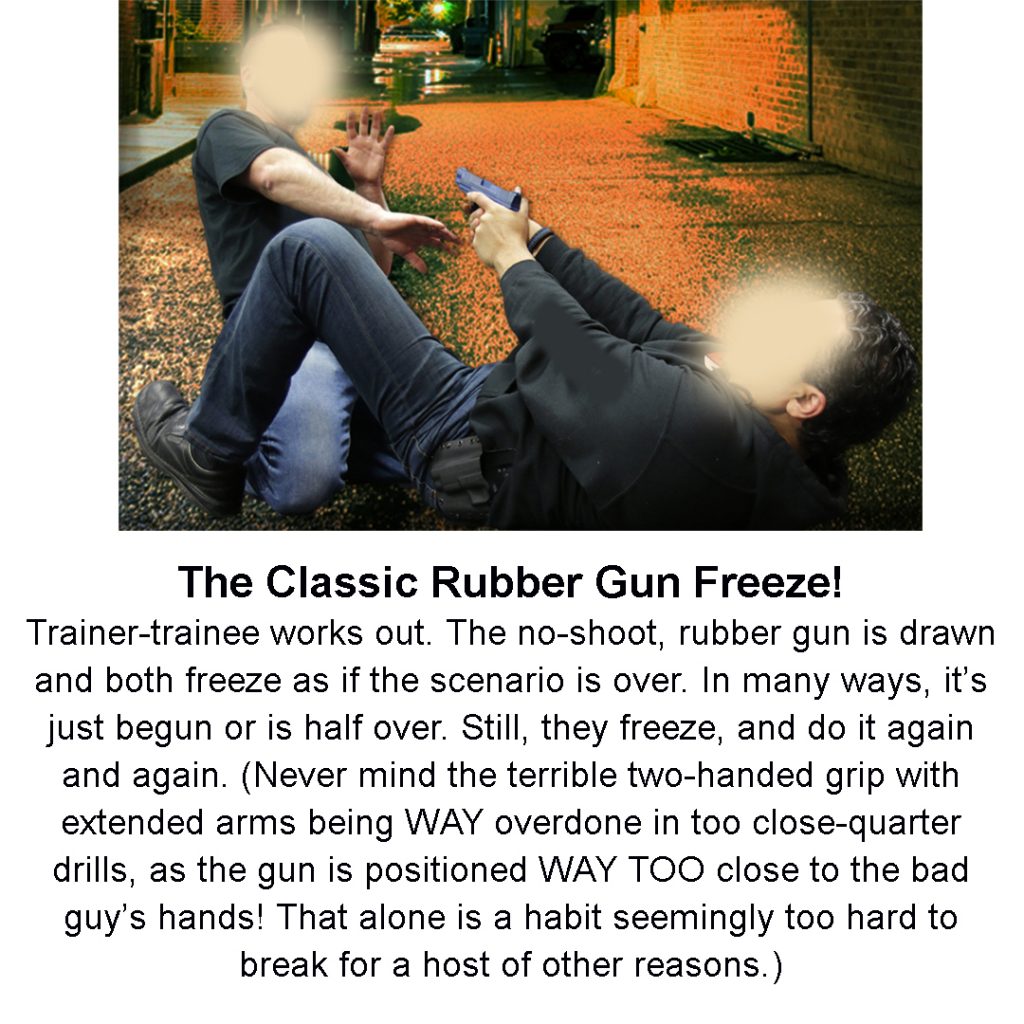
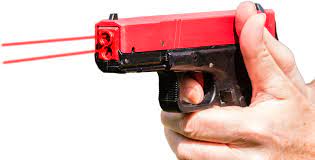 Light Beams? Somewhat popular these last few years are the SERT guns. To say “popular” might be a “financial” misnomer. They are about $225 to $500. They shoot light beams. They are very real in look, size and wright. Everybody knows about them but few can afford them. How many people do you know will afford to buy one? If you teach seminars, how many people show up with one? In my many year teaching experience, very, very few show up with SERT guns. $$$! And here’s the training rub, when battling with CQC force on force, the attacker-actor almost never knows where the light beam landed so they can simulate a leg shot, hip or gut shot, or throat shot, whatever. They always see, feel where the rubber band lands. Okay, SERT is neat for solo practice, but almost useless for me in the type of hardcore, close quarters drills I do.
Light Beams? Somewhat popular these last few years are the SERT guns. To say “popular” might be a “financial” misnomer. They are about $225 to $500. They shoot light beams. They are very real in look, size and wright. Everybody knows about them but few can afford them. How many people do you know will afford to buy one? If you teach seminars, how many people show up with one? In my many year teaching experience, very, very few show up with SERT guns. $$$! And here’s the training rub, when battling with CQC force on force, the attacker-actor almost never knows where the light beam landed so they can simulate a leg shot, hip or gut shot, or throat shot, whatever. They always see, feel where the rubber band lands. Okay, SERT is neat for solo practice, but almost useless for me in the type of hardcore, close quarters drills I do. 